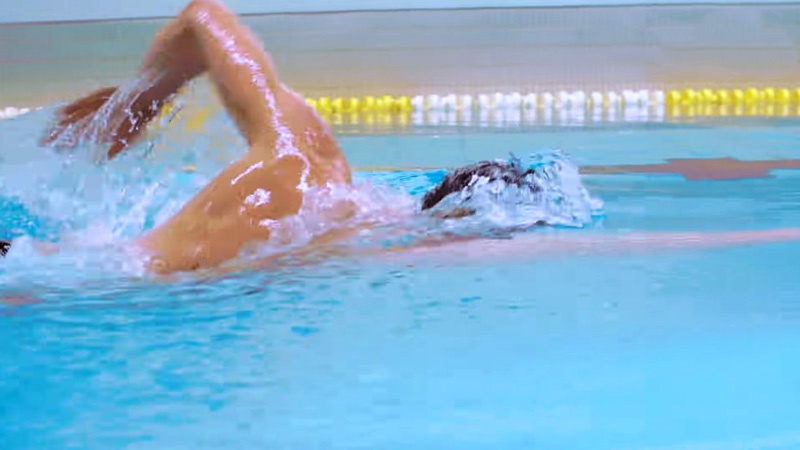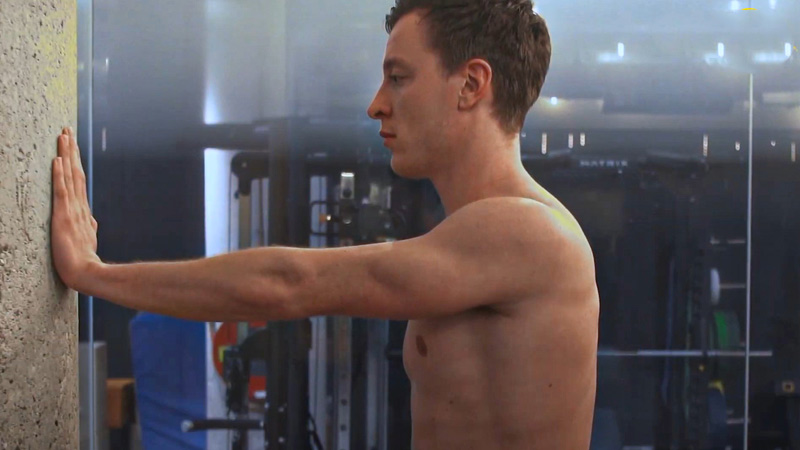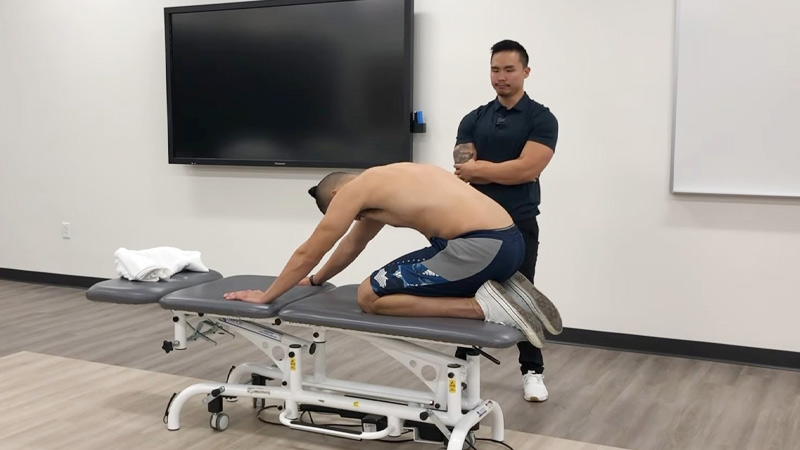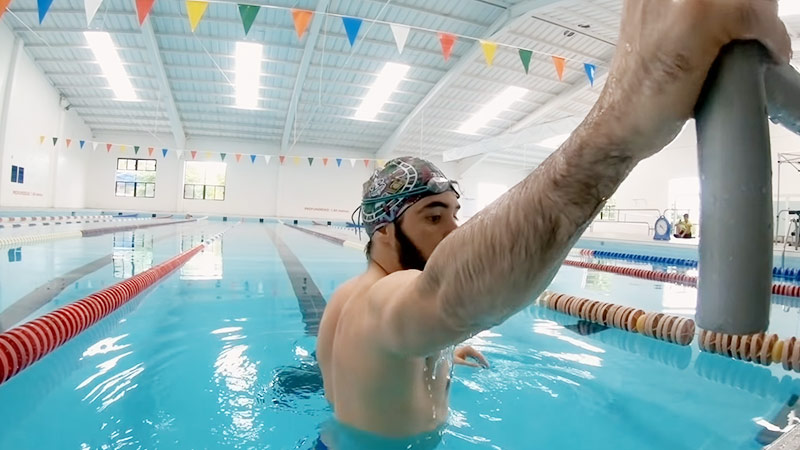Swimming is a fantastic full-body workout, but it often leaves swimmers pondering the question: “Why do my arms hurt after swimming?”
Whether you’re a beginner or an experienced swimmer, post-swim arm soreness can be a common and sometimes unwelcome companion.
In this blog post, we’ll delve into the factors behind this discomfort and explore practical solutions to alleviate the pain.
From understanding the specific strokes that strain your triceps to addressing common mistakes in swimming technique, we’ll provide insights to help you prevent and manage post-swimming arm soreness.
We’ll also cover essential tips on effective warm-ups, recovery strategies, and when to seek professional advice for persistent pain.
So, if you’ve ever wondered why your arms ache after a refreshing swim, keep reading to unlock the secrets behind this phenomenon and discover how to enjoy your aquatic exercise without the added discomfort. So, stay focused.
Why Do My Arms Hurt After Swimming
Pain in your arms after swimming can be attributed to various factors. One common cause is overuse of the shoulder and arm muscles, especially if you’re not accustomed to the exercise.
Inefficient technique or improper form while swimming can also strain these muscles.
Additionally, the repetitive motion of the arms in swimming can lead to muscle fatigue and soreness, similar to any strenuous physical activity. Cold water can cause muscles to contract, potentially leading to discomfort.
It’s crucial to warm up before swimming, maintain proper technique, and gradually increase your intensity and duration to prevent arm pain.
If pain persists or worsens, consult a medical professional, as it could be indicative of an underlying issue, like tendinitis or rotator cuff problems.
What Causes Triceps Sore After Swimming

Sore triceps after swimming can result from various factors related to the swimming stroke and muscle engagement. Here are a few key reasons for triceps soreness:
Freestyle Stroke
The freestyle stroke (also known as the front crawl) is the most common swimming stroke. It heavily relies on the triceps for propulsion, as they play a significant role in extending the arm during the pull phase.
The repetitive motion of extending the arm, catching the water, and pulling it back can lead to triceps fatigue and soreness, especially if you’re not accustomed to the stroke.
Intensive Training
Engaging in intense swimming workouts or drills that involve a higher volume of freestyle strokes can overwork the triceps.
The continuous contraction and extension of these muscles while generating power in the water can lead to soreness.
Improper Technique
Inefficient technique can lead to greater reliance on the triceps for propulsion. When swimmers don’t engage their core and other muscle groups effectively, it places additional strain on the triceps.
Proper stroke mechanics, including body rotation and a high elbow catch, can distribute the workload more evenly across muscle groups.
Cold Water
Swimming in cold water can cause muscles to contract and tighten, making them more susceptible to soreness.
When the triceps are cold and not adequately warmed up, the risk of post-swimming soreness increases.
To minimize triceps soreness, it’s important to gradually increase the intensity of your workouts, focus on proper swimming technique, and ensure you’re adequately warmed up before swimming, especially in cold water.
Tip to Prevent Pain in Arms After Swimming
To prevent pain in your arms after swimming, follow these tips:
Proper Warm-Up

Before entering the water, warm up your muscles with light stretching and dynamic exercises. This helps increase blood flow and prepares your arm muscles for the demands of swimming.
Technique Improvement
Focus on refining your swimming technique. Efficient stroke mechanics can reduce strain on your arms.
For example, in freestyle, emphasize a high elbow catch and engage your core to distribute the workload across muscle groups, reducing the strain on your arms.
Gradual Progression
If you’re relatively new to swimming or increasing your swim intensity, avoid overexertion. Gradually build up your swimming distance and intensity to allow your arm muscles to adapt and strengthen over time.
Cooldown and Stretching
After your swim, perform a cooldown by swimming a few easy laps or treading water.
Follow this with stretching to improve flexibility and reduce post-swim muscle tightness. Focus on stretching your arms, shoulders, and upper body.
Remember that listening to your body is crucial. If you experience persistent or severe arm pain, it’s essential to rest and allow your muscles to recover.
How to Get Rid of Arm Pain After Swimming
To alleviate arm pain after swimming, consider these strategies:
Rest and Recovery
- Give your arms time to rest and recover. Avoid strenuous activities that may further strain your arm muscles.
- Apply the RICE method (Rest, Ice, Compression, Elevation). Applying ice to the sore area for 15-20 minutes several times a day can help reduce inflammation and pain. Avoid applying ice directly to the skin; use a cloth or towel as a barrier.
Gentle Stretching and Range of Motion Exercises
- Perform gentle stretching exercises to improve flexibility in your arm muscles. Focus on stretches for the triceps, biceps, and shoulders.
- Incorporate a range of motion exercises to prevent stiffness. Gradually and gently move your arms through their full range of motion to maintain joint mobility.
Over-the-Counter Pain Relief
Over-the-counter non-steroidal anti-inflammatory drugs (NSAIDs), such as ibuprofen or naproxen, can help reduce pain and inflammation.
Follow the recommended dosage instructions and consult a healthcare professional if necessary.
Massage and Self-Myofascial Release
A gentle massage by a trained therapist can help relieve muscle tension and improve blood circulation.
You can also use a foam roller or massage stick for self-myofascial release to target specific sore areas in your arms.
Professional Evaluation and Physical Therapy

If the arm pain persists or worsens, consult a healthcare professional, such as a sports medicine specialist or physical therapist.
They can assess your condition, provide a tailored rehabilitation plan, and address any underlying issues that may be contributing to the pain.
Remember that proper technique and prevention strategies, as discussed in previous responses, are essential to avoid recurrent arm pain after swimming.
When to See A Doctor for Sore Arms from Swimming
You should consider seeing a doctor for sore arms from swimming if:
Pain Persists or Worsens
If the arm pain doesn’t improve or becomes more severe after a reasonable period of rest and self-care, it’s a clear sign that something more than typical muscle soreness may be at play.
Chronic, persistent pain could indicate an underlying issue like tendinitis, bursitis, or a stress injury.
Limited Range of Motion
If you experience significant limitations in your range of motion, such as difficulty extending or flexing your arms, it’s a red flag.
This could be indicative of a more serious musculoskeletal problem that requires medical evaluation.
Swelling, Redness, or Warmth
If you notice any of these signs in the affected arm, it may indicate inflammation or infection.
Swelling, redness, or warmth can be symptoms of conditions like cellulitis or deep vein thrombosis, which require prompt medical attention.
Numbness or Tingling
If you experience numbness, tingling, or a pins-and-needles sensation in your arms, it could be related to nerve compression or impingement.
Nerve-related issues should be assessed by a medical professional to determine the cause and appropriate treatment.
Previous Injuries or Medical Conditions
If you have a history of arm injuries, joint problems, or medical conditions that affect your musculoskeletal system, such as arthritis, it’s advisable to consult a doctor sooner rather than later.
These pre-existing conditions can complicate arm pain and may require specialized care.
It’s essential to pay attention to the severity and persistence of arm pain, as well as any accompanying symptoms.
When in doubt or if you’re concerned about your arm discomfort, seeking medical evaluation is a wise decision.
FAQs
How to treat arms sore after swimming?
To alleviate soreness, rest, apply ice, and gently stretch your arms. Over-the-counter pain relievers can help. If pain persists, consult a healthcare professional.
What causes sore arms after swimming?
Sore arms can result from overuse, improper technique, and cold water exposure during swimming. Freestyle strokes and intense workouts can strain the triceps.
Can swimming make you sore?
Yes, swimming can cause muscle soreness, especially if you’re new to the activity or engage in high-intensity training. It’s a form of exercise that works multiple muscle groups, including the arms.
How to prevent arm pain after swimming?
Prevent arm pain by warming up, improving swimming technique, gradually increasing intensity, and incorporating post-swim cooldown and stretching routines.
When should I see a doctor for arm pain after swimming?
Consult a doctor if arm pain persists, worsens, limits your range of motion, or is accompanied by swelling, redness, numbness, or a history of arm injuries or medical conditions.
Wrapping Up
Sore arms after swimming need not be a deterrent to enjoying this wonderful exercise.
We’ve explored the factors that contribute to arm pain, offered strategies for prevention and relief, and discussed when to seek medical attention if necessary.
By improving your technique, gradually increasing intensity, and prioritizing proper post-swim care, you can minimize discomfort and enhance your overall swimming experience.
Remember, your journey to pain-free swimming is achievable with knowledge, patience, and dedication.
So, dive back into the water, put these tips into action, and make your swimming sessions not just enjoyable but also a source of fitness and well-being.
With the right approach, you can conquer arm soreness, helping you glide effortlessly through the water and savor the many benefits that swimming has to offer. Thank you for supporting us unconditionally.







